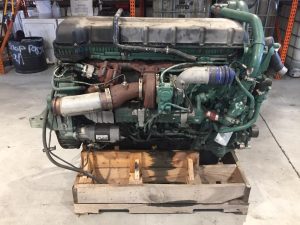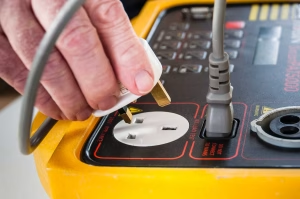How to Efficiently Handle Termite Reticulation System Refills: A Comprehensive Guide
Understanding Termite Reticulation Systems
What is a Termite Reticulation System?
A termite reticulation system is an innovative method of providing consistent, long-term protection from termites for homes and commercial properties. It consists of a network of underground pipes that are strategically installed around the perimeter of a structure. This system allows for the controlled application of termiticides, chemical treatments that kill or repel termites, directly into the soil. Unlike traditional termite treatments, which often require drilling and may only treat the surface area, reticulation systems offer a more comprehensive solution by dispersing chemicals evenly throughout the soil surrounding the property.
How They Protect Your Home
Termite reticulation systems create a barrier against termites, significantly reducing the risk of infestation. The system’s tubes can be refilled with termiticides as needed, typically every 3 to 8 years depending on the chemical used, ensuring ongoing protection. By administering treatments underground, the system mitigates the exposure of chemicals to the environment while offering a proactive solution to potential termite issues. This method not only maintains structural integrity but also preserves the property’s value over time.
Common Components of the System
A typical termite reticulation system includes several key components:
- Piping: High-density polyethylene (HDPE) pipes that are resistant to chemicals and corrosion.
- Injection Ports: Access points for injecting termiticides into the system pipes.
- End Caps: These secure the system and prevent leakage of chemicals.
- Monitoring Stations: Optional components for tracking termite activity around treated areas.
Timing Your Termite Reticulation System Refills
Recommended Refill Intervals
Refills for termite reticulation systems are crucial to ensure their efficacy. Most systems should be refilled every 3 to 5 years, while some advanced chemical systems may extend up to 8 years. The frequency depends largely on the type of chemical used; for instance, some termiticides may have longer-lasting formulas that require less frequent application. Homeowners should consult with professionals like those at termite reticulation system refills providers to establish a tailored refill schedule based on their specific situation.
Signs Your System Needs Attention
Recognizing when your termite reticulation system requires servicing is vital. Look for signs such as:
- Increased Termite Activity: Discovering new termite droppings or visible signs of tunneling indicates that the system may not be effective.
- Visual Checks: Inspecting access points and pipelines for damage or blockages.
- Soil Discoloration: Changes in the soil’s color surrounding the system may signify leaks or ineffective chemical distribution.
How to Schedule a Professional Refill
To ensure proper maintenance, homeowners should always hire a qualified pest control technician for refills. Scheduling an appointment typically involves:
- Contacting a Provider: Reach out to a trusted pest control service to discuss observed issues or perform scheduled servicing.
- Inspection: A technician will assess the system’s condition and determine the necessary actions.
- Refill Service: The technician will utilize specialized equipment to refill the system through its access points.
The Refill Process Explained
Tools and Equipment Needed
The refill process requires specific tools and equipment to ensure safety and effectiveness. Some essentials include:
- Specialized Injector: Used to dispense the termiticide into the piping system.
- Personal Protective Equipment: Safety gear such as gloves, goggles, and masks to protect against chemical exposure.
- Access Tools: Tools for opening access ports, often including screwdrivers or specialty keys.
Step-by-Step Refilling Instructions
The refilling process typically follows these steps:
- Prepare the Area: Ensure the work area is safe, removing any obstacles around the access points.
- Access the System: Open the needed injection ports using appropriate tools.
- Inject Termiticide: Utilizing the injector, strategically dispense the chemical into the system’s piping as per manufacturer guidelines.
- Seal and Inspect: Carefully close the access points and conduct a final check to ensure there are no leaks or visible issues.
- Document the Process: Record the refill date and type of chemical used for future reference.
Common Mistakes to Avoid
While refilling your termite reticulation system may seem straightforward, homeowners should avoid several common pitfalls:
- Skipping Professional Help: Attempting to refill the system without expert knowledge can lead to improper application and safety risks.
- Ignoring Warning Signs: Failing to notice early indicators of a system malfunction can lead to severe termite damage.
- Using Incorrect Chemicals: Always consult professionals regarding which termiticides are best for your specific system.
Cost Considerations for Termite Reticulation System Refills
Average Costs and What to Expect
The costs associated with termite reticulation system refills can vary widely based on several factors. On average, homeowners can expect to pay between $300 to $600 per refill, depending on the size of the property and the type of chemicals used. Remote or difficult-to-access locations may incur higher service fees due to travel and equipment challenges.
Factors Affecting Refill Costs
Several elements can influence the total price of a refill service:
- Size of the Property: Larger areas require more time and materials to refill.
- Type of Termiticide: Some chemical solutions are more expensive than others.
- Service Provider Pricing: Rates can vary significantly between pest control companies, so obtaining multiple quotes is advisable.
Insurance and Warranty Insights
Understanding how your insurance and warranties interact with termite control can offer peace of mind. Most homeowners’ insurance policies do not cover termite damage, emphasizing the importance of preventative measures. Additionally, many pest control companies offer warranties for their services, which can cover refills and maintenance, making it essential to choose a plan that suits your specific needs.
Long-Term Maintenance Tips
Keeping Your System Functional
Maintaining your termite reticulation system is crucial for its long-term effectiveness. Here are some strategies to keep in mind:
- Routine Inspections: Schedule annual inspections to detect any issues early.
- Professionally Clean the System: Inquire about periodic maintenance that cleans out any debris or blockages in the piping.
- Monitor Surrounding Areas: Keep an eye on landscaping and soil disturbances that may indicate termite activity.
When to Upgrade Your System
While routine refills can prolong the life of your reticulation system, there may come a time when it makes sense to invest in an upgrade. Consider these factors:
- Age of the System: Most systems have a lifespan of about 10-15 years. If your system is reaching this age, consider a replacement.
- Changing Technology: New advancements may provide better protection or efficiency compared to your current setup.
- Increased Pest Activity: If your system has failed to protect against termites effectively, an upgrade might be necessary.
Professional Maintenance vs. DIY
When it comes to maintaining termite reticulation systems, homeowners often ponder between professional services and DIY approaches. While DIY refills may seem cost-effective, they come with significant risks, including improper chemical handling and misapplication. Hiring professionals ensures compliance with safety regulations, effective refilling, and expert assessments, ultimately leading to better long-term results and reduced risk of future infestations.














Post Comment